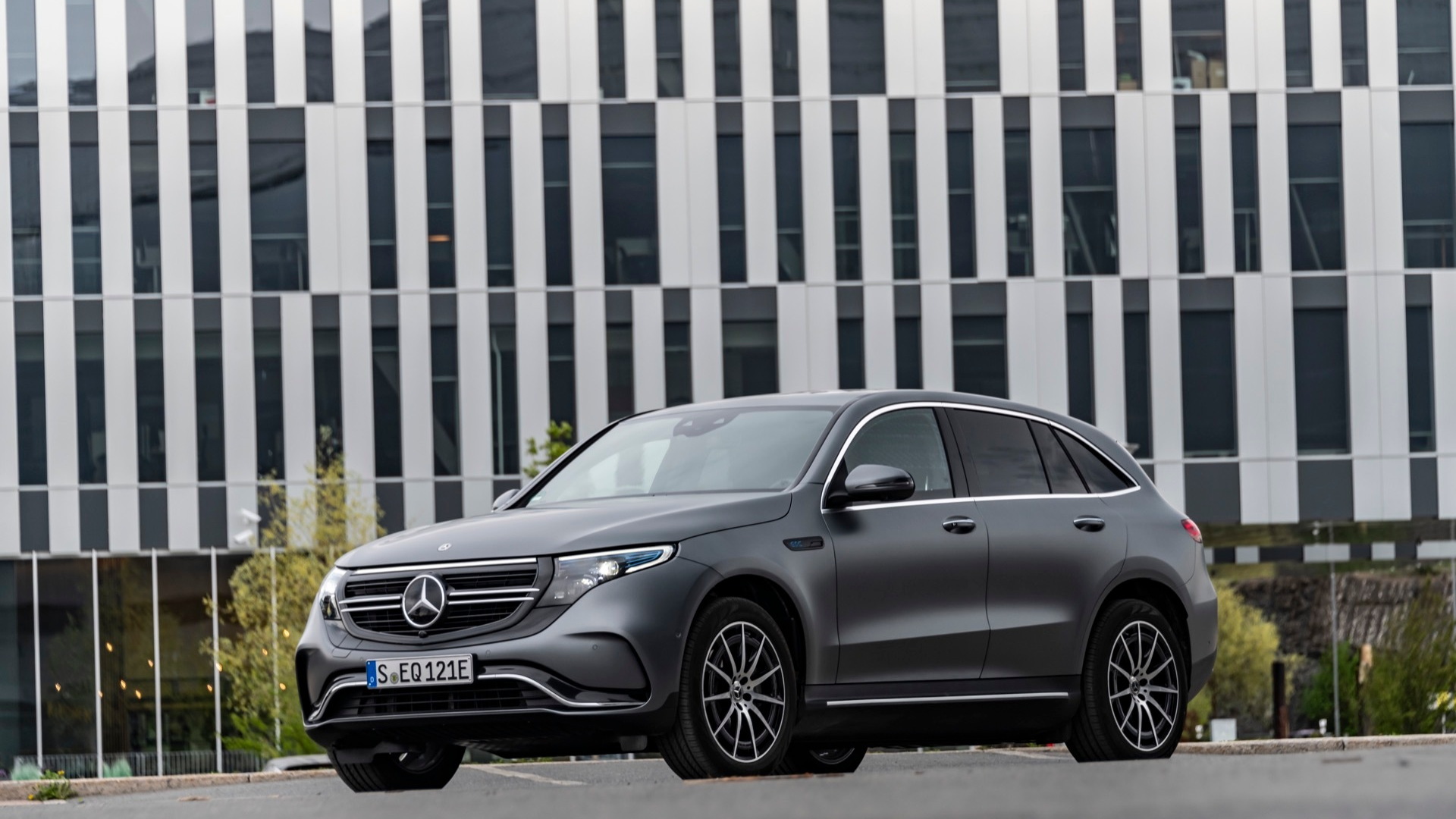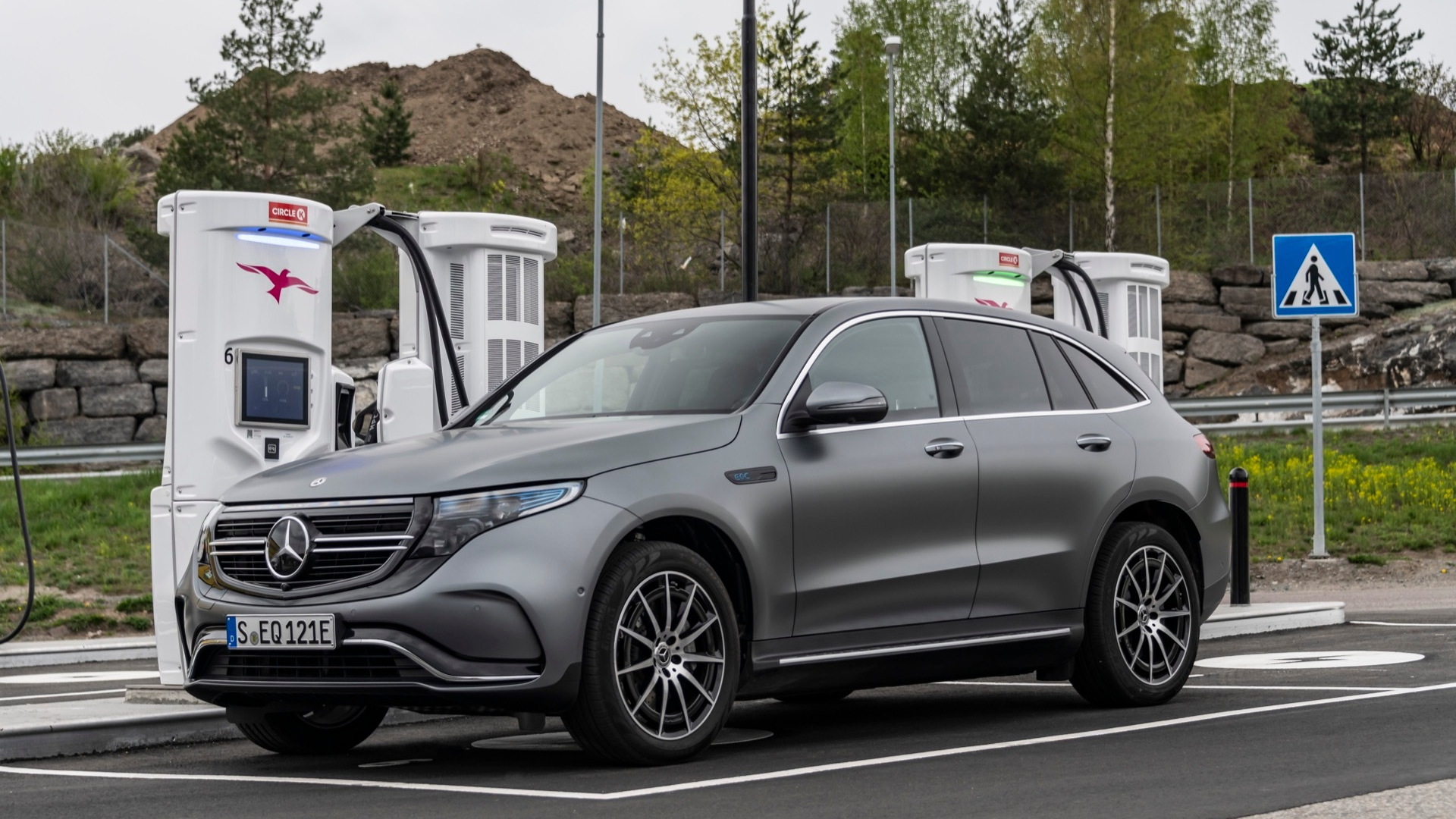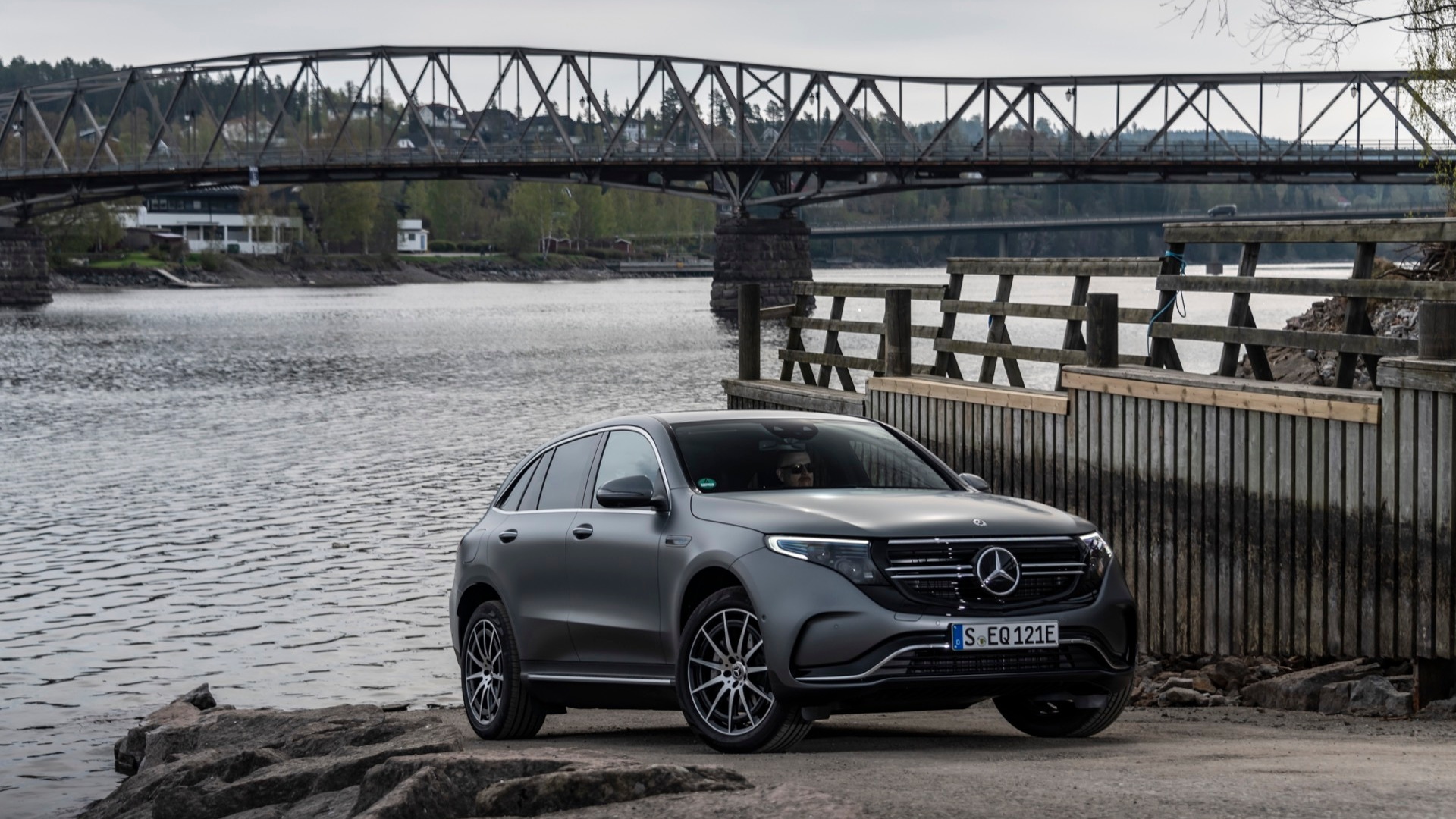The 2020 Mercedes-Benz EQC battery-electric crossover is finally coming to our shores, the automaker announced Wednesday. It will start at $68,895 (including a $995 destination fee) when it arrives here early in 2020.
Power comes from dual electric motors (front and rear) with a total output of 402 horsepower and 564 pound-feet of torque. The front motor handles the bulk of power delivery under normal circumstances, but when extra juice is needed (or the need for all-wheel drive is detected), the rear motor is toggled. Mercedes says the EQC will do 0-60 in just 4.9 seconds.
Juice comes from an 80-kilowatt-hour lithium-ion battery pack which should store enough power for 200 miles of range on a single charge. It can charge on 240V AC with its 7.4-kw on-board charger in about 11.5 hours. CCS DC fast-charging cuts the time required to hit an 80-percent charge (from 10 percent) to just 40 minutes—if it’s on a charger that permits its peak 110-kw rate. It is theoretically possible to charge the EQC on America's standard 110/120V home plugs, but don't expect it to be practical.
Mercedes launched the 2020 EQC in Europe early this year. Green Car Reports drove it in Norway, where it benefited from the country's far more robust and unified charging infrastructure, which enables a lot of the advanced features included in the EQC's (thus far unique) implementation of Mercedes' MBUX A.I.-enabled infotainment system.
In the EQC, MBUX has a separate category for connected EV functions which interfaces with the EQC's navigation and mobile connectivity features. Aside from normal features like weather and traffic monitoring, the navigation system keeps tabs on the location and availability of EV charging stations.
This enables fine-tuning of routes and charging stops. Drivers can also plan ahead via the company's smartphone app, Mercedes me, which will interface with the on-board route planning app to allow drivers to set certain state-of-charge thresholds. This, in turn, communicates with the EQC's drive mode system to optimize performance for a given trip.
The MBUX infotainment interface accepts gesture-, touch- and voice-based commands, so a driver need only say, "Hey Mercedes?" and then ask for the location of a charging station, for instance. It can even be used to tell the EQC to initiate the charging process once the vehicle has been plugged in.
Mercedes' chief rivals for the EQC are the $86,895 Jaguar I-Pace and the $75,795 Audi E-Tron. Jaguar's performance-oriented CUV promises 240 miles from a 90-kwh battery, but that figure has proven optimistic in the real world. The E-Tron has thus far proven to be the most capable all-around car in this class, leaving the EQC to slot in at the comfort-oriented end of the spectrum.
The EQC is also (so far, anyway), the most affordable entry in the battery-electric luxury crossover segment—one that is rapidly expanding: both the BMW iX3 and Tesla Model Y are due to in 2020, and more new products are expected in the coming model years.
At launch, the EQC will be available in three trims: Progressive, Premium and Advanced. Mercedes-Benz is keeping the build options fairly simple when it arrives here. The Progressive and Premium tiers will be available with just two paint and upholstery options; the Advanced will be offered with three of each.


















